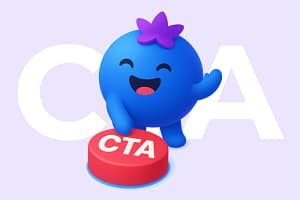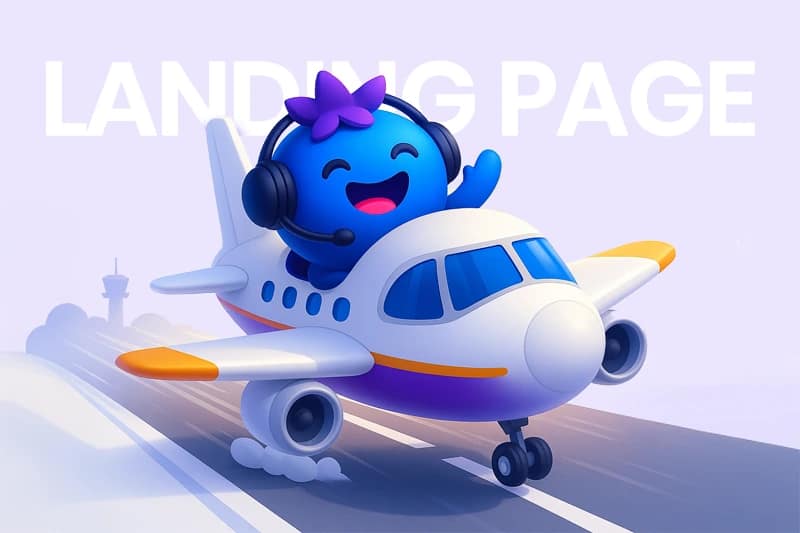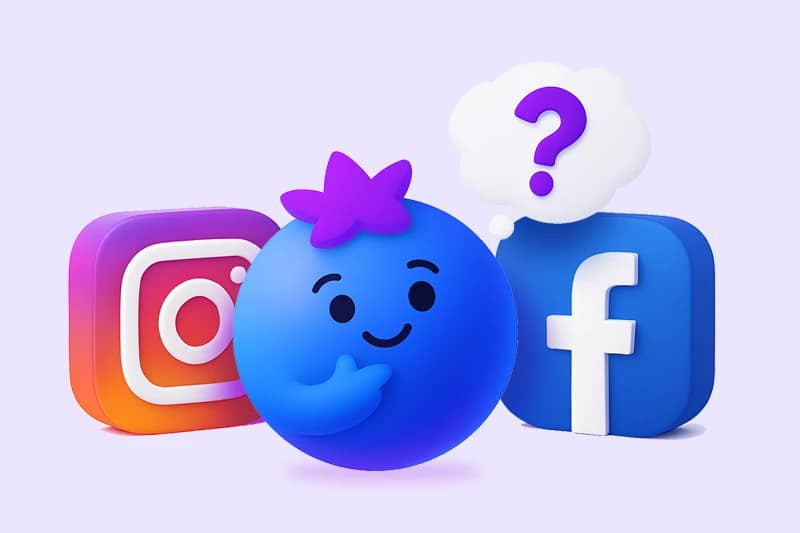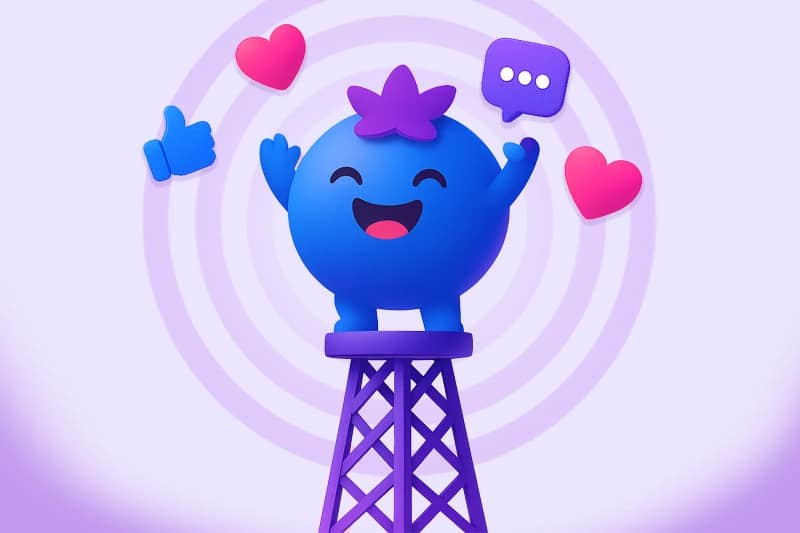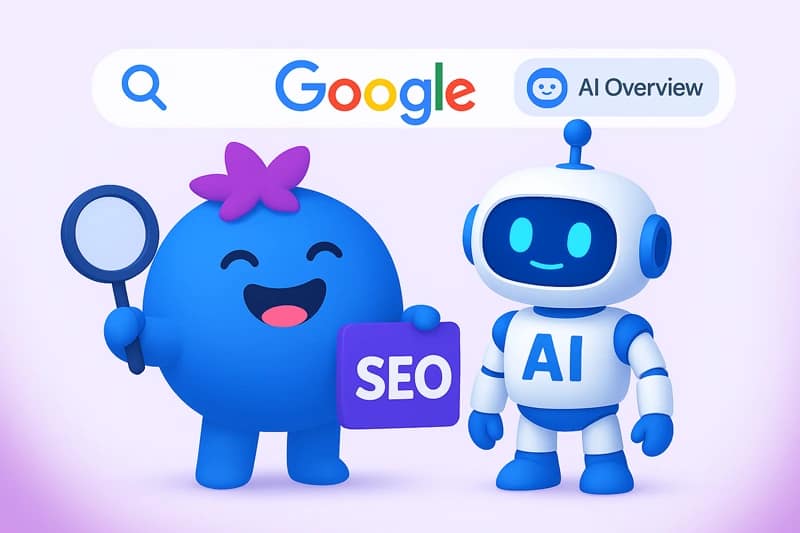If you’ve ever searched Google for “what is a CTA”, “CTA meaning” or “call to action definition”, to get a clearer idea of how marketers push users to click, buy or subscribe — you’re in the right place. A CTA (Call To Action) is one of the simplest, yet most powerful elements in digital marketing. It’s the small piece of copy or the button that tells your user exactly what to do next — and moves them one step closer to your business goal.
A CTA can take many forms: the classic “Buy Now” button on an e-commerce site, a text link in a blog post saying “Learn more”, or even a verbal prompt in a YouTube video like “Subscribe to our channel”. No matter the format, its mission stays the same: guide the user to the next logical step.
Think of a CTA as a bridge — a short, clear instruction that connects the content someone is currently consuming with the action you actually want them to take. According to most marketing definitions (including the one on Wikipedia), a call to action is a fundamental tool in online advertising and content design. Without it, even the best content leaves users hanging — they’re interested, but they’re not sure what to do next.
A strong CTA is not just a button. It’s a psychological trigger. A tiny piece of UX that influences behaviour: Should the user subscribe? Download something? Reach out? Continue reading? Click? Buy?
And importantly — a call to action doesn’t always need to sell. Depending on your goal, an effective CTA might encourage someone to:
- join your newsletter
- download a free resource
- read the next article
- watch a video
- fill in a contact form
- or simply like and engage with your social media post
In other words: when we ask what is a CTA in marketing, the real answer is this — it’s the guiding hand that leads your audience through the entire customer journey. Without a clear CTA, most marketing efforts fall flat, because users don’t know what to do next. And no action means no results.rmy.
Why CTAs Are Essential in Digital Marketing
When people search for “what is a CTA” or “CTA meaning”, they’re not just looking for a dry definition. What they really want to understand is how a call to action works in real-world marketing — and why it’s such a crucial part of every website, ad or social media post.
A CTA isn’t decoration. It’s not a “nice touch” you add at the end of your copy.
A Call To Action is a business tool — a strategic element that directly influences conversions, engagement and the entire customer journey. In practice, your CTA often decides whether a user continues, clicks, buys… or simply leaves your site without taking any action.
Here are a few examples that show why CTAs matter so much in digital marketing:
1. In e-commerce
A CTA moves the user straight toward purchase.
Buttons like “Add to Basket”, “Buy Now” or “Checkout – Fast Delivery” can increase sales dramatically when they’re clear, visible and placed at the right moment.
A great CTA is often the difference between browsing and buying.
2. In content marketing
CTAs guide readers deeper into your content ecosystem:
“Download the free guide”, “Read the next article”, “Join our newsletter”.
This prevents users from bouncing after one post and helps build a long-term relationship with your brand.
3. On social media
A CTA boosts engagement and reach.
Simple prompts like “Like if you agree”, “Comment below”, “Share with a friend” trigger interaction — which pushes your posts further in the algorithm and expands your audience organically.
4. In online ads (Google Ads / Meta Ads)
A CTA is one of the most powerful levers in paid campaigns.
Ads without a clear call to action lose persuasive strength.
High-intent CTAs such as “Order today – free delivery” or “Book your spot now” often improve CTR and drastically improve ad performance.
5. In mobile apps and SaaS
Here, a CTA becomes a moment of commitment.
Buttons like “Try for free”, “Start your free trial”, “Log in” or “Create account” shape whether the user stays, returns or churns.
Need a quick quote for your new Website Design?
Get a Fast QuoteDifferent Types of CTAs and Where to Use Them
Not every CTA looks the same — and that’s exactly why this element works so well across different areas of digital marketing. A call to action can be a bold button on a product page, a subtle text link inside a blog post, a short prompt under a social media video or a simple line above a newsletter form. Each format serves a slightly different purpose, yet all of them share one goal: guiding the user naturally toward the next step.
On websites, CTAs most often appear as visible, action-driven buttons such as “Buy Now”, “Add to Basket” or “Get a Quote”. They stand out, they’re predictable and they push the user forward at key decision-making moments. In blog articles and educational content, brands tend to use softer, text-based CTAs like “Read more” or “Download the guide”, so the flow of the article feels natural while gently directing the reader deeper into the site.
Social media takes a different approach. Here, CTAs are designed to drive engagement rather than immediate conversions. Short prompts like “Comment below”, “Save this post for later” or “Share with a friend” help the algorithm recognise interaction and expand the reach of your content. Even paid ads rely heavily on clear, concise CTAs — without a direct instruction such as “Shop now” or “Book today”, even the best campaign loses a huge part of its persuasive power.
In SaaS platforms and mobile apps, CTAs often have a personal, action-orientated tone. Buttons like “Try for free”, “Start your trial” or “Create an account” appear at moments where users make quick, lightweight decisions — and the right CTA nudges them to commit.
No matter the form, a CTA is always the same at its core: a strategic signpost that tells your user what happens next.
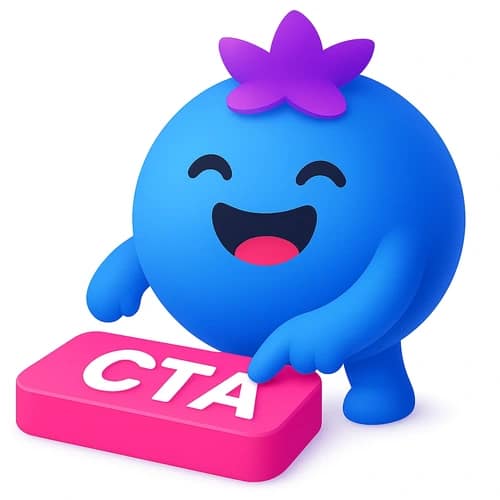
How to Write a CTA That Actually Converts
A high-converting CTA isn’t about shouting at the user or using flashy colours. It’s about clarity, timing and understanding what your audience expects at a specific moment. The strongest CTAs feel natural — as if the user already wanted to take that step, and your message simply confirmed it.
The first rule is simplicity. A CTA should communicate one action, in one clear line. When someone sees “Get a Quote”, “Download the Guide” or “Book a Free Call”, there’s no confusion about what happens next. Users don’t convert when they’re unsure — they convert when the instruction is obvious.
Another key factor is context. A CTA that works perfectly on a homepage hero section may not work inside a long article. Your wording has to match the user’s mindset. If they’re exploring, use softer language like “Learn more”. If they’re comparing services, focus on reassurance: “See pricing” or “Check availability”. If they’re ready to buy, make the action immediate: “Order now” or “Start today”.
Emotion also plays a quiet but powerful role. The best CTAs reduce friction and increase confidence. Phrases such as “No signup required”, “It’s free”, “Takes 30 seconds” or “No credit card needed” can drastically lift conversions, because they remove the user’s fear of commitment. Great CTAs don’t just instruct — they reassure.
Design matters too, but not in a gimmicky way. A CTA should stand out enough to be noticed, but not so aggressively that it feels forced. Consistent colours, readable text and enough space around the button make it feel intentional and trustworthy. Users respond to clarity, not chaos.
And finally, a strong CTA speaks directly to the benefit, not the action. The difference between “Sign up” and “Get weekly marketing tips” is the difference between a click and a bounce. The more your CTA connects with what the user actually wants, the higher your conversion rate will climb.
In the end, writing a CTA that converts is all about alignment: the right message, at the right moment, in the right tone. When those three elements meet, the user doesn’t feel pushed — they feel guided.
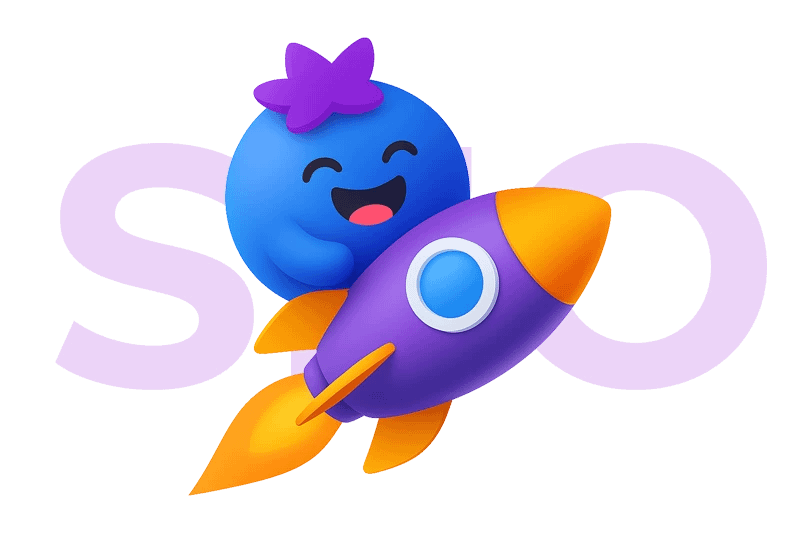
CTA and SEO, How Calls to Action Influence Your Search Performance
CTAs and SEO may feel like two separate worlds: one focuses on clicks and conversions, the other on rankings and visibility. But in practice, they’re closely connected. A well-written CTA can indirectly improve your SEO performance, because Google pays attention not only to keywords, but also to how users behave once they land on your website.
A clear CTA reduces bounce rates, increases time on page and encourages users to explore additional content — all of which are strong positive signals for search engines. When visitors move naturally from one article to another or from a blog post to a service page, Google sees your site as more engaging and more helpful. And helpful websites tend to rank higher.
CTAs also support internal linking, which is an essential part of technical and on-page SEO. A simple text CTA like “Read our guide to local SEO” or “See our web design portfolio” connects relevant pages in a way that feels organic, not forced. The more structured your internal journey is, the easier it becomes for search engines to understand the hierarchy of your content.
Even the wording of a CTA matters. When your call to action includes a descriptive phrase — for example “Download our SEO checklist” instead of a generic “Download” — it reinforces topical relevance and helps search engines associate your page with the right intent.
But most importantly, a strong CTA drives conversions, and conversions are the real reason SEO exists. Ranking on page one is only half the job. If users land on your website and don’t do anything, the traffic is wasted. A clear CTA transforms passive visitors into active leads, subscribers or customers — and that’s where the value of SEO truly shows.
In short, SEO brings users to your website. CTA shows them what to do once they’re there. When both elements work together, the results compound.
CTAs in Google Ads – Why They Matter More Than You Think
In Google Ads, a CTA isn’t just a nice finishing touch — it’s one of the most influential elements of the entire campaign. Even the best-targeted ad with the perfect keyword and strong creative loses its edge if it doesn’t tell the user what to do next. A clear call to action can instantly lift your CTR, improve your Quality Score and reduce your cost per click, simply because users interact more confidently with ads that feel direct and purposeful.
Google Ads users scan quickly. They compare, scroll, and make split-second decisions. A strong CTA gives them the direction they subconsciously expect. Phrases like “Shop now”, “Book today” or “Get a fast quote” anchor the message and turn curiosity into action. Without that final line, an ad often feels unfinished — as if something important is missing.
But the CTA in Google Ads isn’t only about getting the click. The right message also sets the expectation for what happens after the user lands on your site. If your ad says “Download the guide”, the landing page must deliver exactly that. When the wording in the ad and the landing page match, conversion rates go up and bounce rates drop — which, again, feeds back into better ad performance.
CTAs in ads also signal intent. A user clicking “Request a quote” is very different from someone clicking “Learn more”. This impacts not only how many leads you get, but the overall quality of those leads. A precise CTA filters out unqualified traffic and attracts users who are ready to take the next step.
In short: the CTA is the heartbeat of your Google Ads. It’s the moment where interest turns into action, and action turns into measurable results. Without it, even the strongest campaign loses momentum.
Need a quick quote for Web Design in Leicester?
Get a Fast QuoteCommon CTA Mistakes That Hurt Your Conversions
Even the strongest website or ad campaign can underperform if the CTA sends the wrong signal. Most brands don’t struggle because their offer is weak — they struggle because their call to action creates friction, confusion or hesitation. Understanding these mistakes is often the quickest way to improve conversion rates without changing anything else in your funnel.
One of the most common issues is using vague, generic wording. CTAs like “Click here” or “Learn more” don’t communicate value, direction or urgency. Users see them everywhere, so their impact is almost zero. A CTA should be specific enough to answer the silent question: “Why should I click this?”
Another problem occurs when the CTA doesn’t match the user’s intent. If someone is reading an educational article, pushing them straight into “Buy now” feels premature and breaks the flow. On the other hand, if someone is on a high-intent page — like pricing or services — a soft CTA like “Maybe explore this” simply doesn’t move them forward. Misalignment kills conversions.
Design can also get in the way. CTAs that blend into the background, use weak contrast or sit too close to other elements are easy to ignore. A call to action should stand out visually, but still look like part of the brand. When users need to “search” for your button, they won’t click it.
Another classic mistake is offering too many CTAs at once. When a page asks the user to subscribe, download, click, book, follow and contact — all in the same section — the result is decision paralysis. A good CTA gives one clear path, not six competing options.
Finally, the biggest mistake is inconsistency between the CTA and the landing page. If your ad promises “Get a free quote” but the landing page shows a long, complicated form, you lose trust instantly. Users convert when expectations and reality match — and a CTA sets those expectations from the very beginning.
A well-crafted CTA removes doubt, focuses attention and makes the next step feel effortless. Avoiding these mistakes alone can transform how your website or ads perform.
| CTA Type | When It Works Best | Conversion Potential |
|---|---|---|
| Button CTA Example: “Buy Now” | Product pages, service pages, landing pages | |
| Text Link CTA Example: “Read more” | Blog posts, long articles, internal linking | |
| Social CTA Example: “Comment below” | Instagram, Facebook, TikTok, LinkedIn | |
| Form CTA Example: “Get a Quote” | Contact pages, lead forms, pricing pages | |
| Weak / Generic CTA Example: “Click here” | Poorly optimised pages | ✗ Low |
Final Thoughts, Why Every Website Needs a Strong CTA
A clear, well-placed CTA is more than a design element. It’s the moment where your marketing turns into measurable action. SEO may bring users to your website, ads may attract the right audience and content may build trust — but without a strong call to action, the journey simply stops.
When your CTAs are aligned with user intent, speak directly to the benefit, and appear at the right moment in the right tone, they create momentum. They guide visitors naturally through your pages, reduce hesitation and turn passive readers into active customers, subscribers or leads.
In today’s digital landscape, where attention spans are short and competition is constant, a powerful CTA is not optional — it’s essential. It’s the final piece that connects your message with real results. And when done right, it can transform every part of your marketing, from organic traffic to paid campaigns.
Ready to Improve Your CTAs and Boost Conversions?
Strong CTAs aren’t just small buttons — they’re a crucial part of the entire user journey. When they’re clear, well-timed and aligned with your message, they turn passive visitors into real leads, customers and enquiries.
If your website needs better structure, stronger CTAs or a complete UX refresh, our team at SocialBerry can design a fast, modern and conversion-focused site that actually guides users toward taking action.
Explore Our Web Design Services in LeicesterDon’t Be Green About CTAs in Digital Marketing


